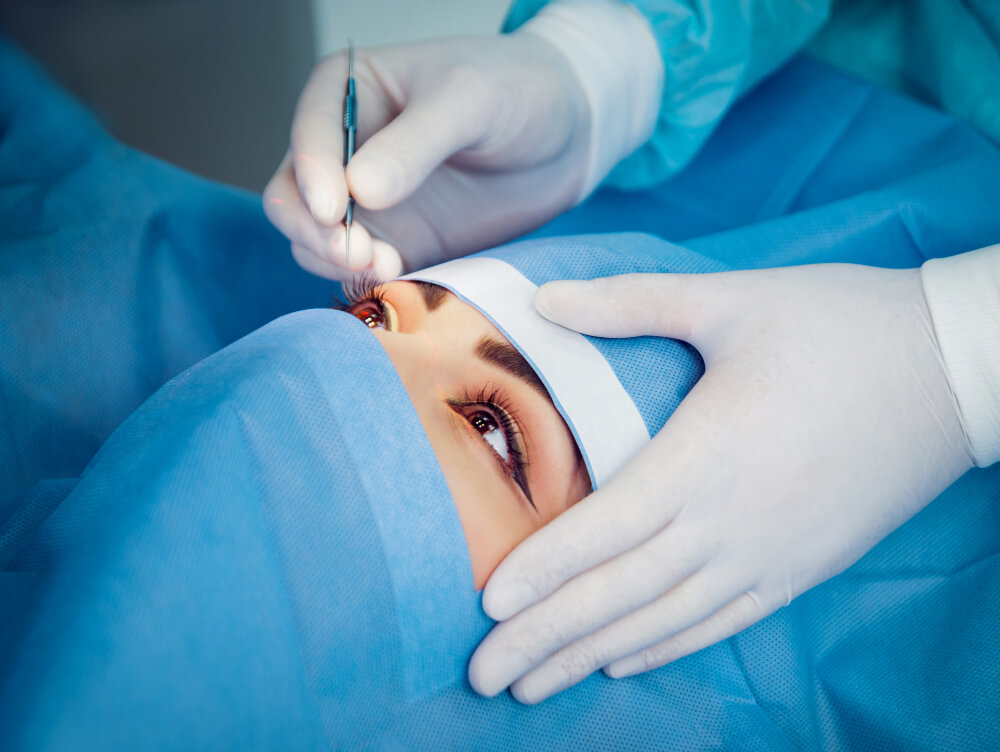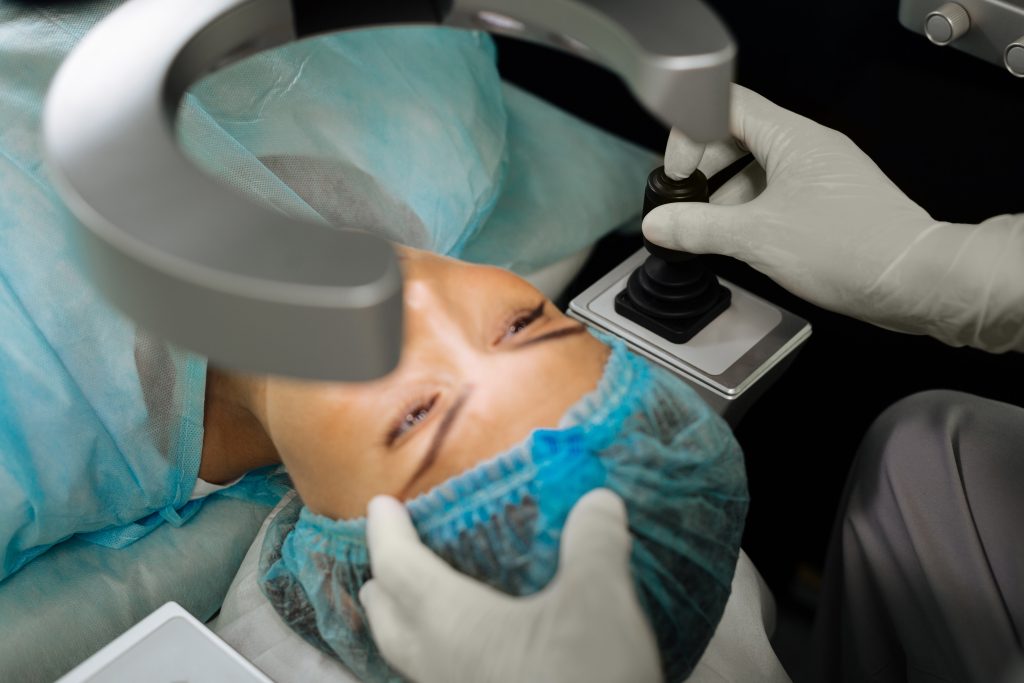
If you are considering LASIK surgery to free yourself from glasses or contact lenses, you are not alone.
Thousands of people opt for LASIK every year to see clearly without glasses. This procedure is safe, effective, and transformative for those who want to fix their eyesight problems.
However, one common question people often ask is, “Is LASIK painful?”. For such people, there is good news that LASIK is not painful. But you can experience mild pressure during LASIK.
In this guide, we will go through how painful LASIK is and the complete process of LASIK treatment.
Understanding the LASIK Procedure

LASIK, or Laser-Assisted In Situ Keratomileusis, is a vision correction procedure that utilizes laser technology to reshape the cornea and enhance light focus on the retina. It is a common method to treat farsightedness, nearsightedness, and astigmatism.
It starts when your eye surgeons remove a flap from your cornea (outer layer of your eye) and expose the inner corneal tissues. Then, they reshape the cornea by removing its tissue with a laser and adjusting it. After adjustment, they place the corneal flap back on your cornea and let it heal naturally.
This minor treatment takes almost 30 minutes for each eye, with a minimal downtime of one to two weeks. Through the utilization of advanced technology, this treatment has attained a level of safety and comfort.
Is LASIK Eye Surgery Painful? All You Need to Know
People who are going to experience LASIK usually ask, “Is LASIK surgery painful?” and “How painful is LASIK eye surgery?” Below, we have answered all such questions.
What Happens During the Treatment
During the treatment, doctors use numbing drops as anesthesia to make the process painless. These drops block your pain sensation and remove dryness for effective surgery.
Some people feel mind pressure or pulling when the flap is generated. However, this is not painful.
For those who are very nervous before the surgery, deal with sedative therapy before surgery to relax and calm them.
What Happens After the Treatment
Once the numbing drops wear off, you may experience minor irritation in your eyes. This feeling is temporary and similar to having an eyelash stuck in your eye.
Drops recommended by your doctor can ease these symptoms. Within a day or two, most people report feeling completely normal.
What to Expect after LASIK Surgery?

LASIK recovery is a step-by-step process, with improvements at each stage. Here is what you can expect during next month to achieve a clear vision:
Immediately After
Shortly after the treatment, you might notice blurry vision, slight discomfort, and increased light sensitivity. However, this is very temporary and for a few hours.
First 6 Hours
After 6 hours, eyes may feel scratchy or watery when the numbing effect of drops completely disappears. Protective shields, sunglasses, and recommended drops can help to minimize this experience.
Next Day
After 24 hours, your vision noticeably improves. Now, you are allowed to resume most activities. However, you still need to use sunglasses and avoid bright light.
First Week
In the first week, you will start seeing the results of LASIK. Minor side effects like halos or glare may continue for some days. However, these effects diminish after the first week.
First Month
From the second week, your vision stabilizes, and you start seeing things more clearly.
Factors That Influence Pain Perception During LASIK
While LASIK is pain-free mainly, different people experience different things. Here are some factors that could influence your pain perception during treatment.
1. Anxiety Levels
Feeling anxious can heighten sensitivity. Techniques for relaxation or gentle sedatives can soothe anxiety and enhance your overall experience.
2. Health Conditions
Pre-existing conditions like dry eye syndrome may cause slight post-operative problems or discomfort. Discuss these concerns with your doctor during the consultation.
3. Surgeon Expertise
Choosing an experienced and skilled surgeon is essential. A knowledgeable professional ensures precision and reduces the risk of complications and discomfort.
Get Clear Vision with “Texan Eye Care”
At Texan Eye Care, we specialize in providing exceptional eye care services to help you achieve optimal vision. From LASIK surgery to comprehensive eye exams and advanced treatments, we prioritize your comfort and clarity at every step.
Our experienced professionals leverage cutting-edge technology to ensure a seamless and pain-free experience, guiding you toward a future free from glasses and contact lenses.
Ready to see the world with a fresh perspective? Visit us at Texan Eye Care to explore our range of vision-enhancing services, and schedule your consultation today!
FAQs
Yes, LASIK is very less painful as compared to PRK. In LASIK, only a small conceal flap is created. However, PRK requires a complete removal of the corneal outer layer, which makes it more complicated and takes more time to stabilize your vision.
Age does not have any direct relation to painful sensations during LASIK. However, with increasing age, the cornea becomes dry, which leads to minor pain during surgery. Doctors analyze your eye condition and use drops and anesthesia accordingly.
Yes, a few eye conditions can increase the risk of pain. For example, chronic dry eyes or autoimmune diseases can make your LASIK a little uncomfortable. However, your doctor will suggest the right treatment before your surgery.
